 |
CONVERSION OF SINGLE ENTRY IN DOUBLE ENTRY ACCOUNTING SYSTEM |
| << PRACTICING ACCOUNTING FOR INCOMPLETE RECORDS |
| SINGLE ENTRY CALCULATION OF MISSING INFORMATION >> |
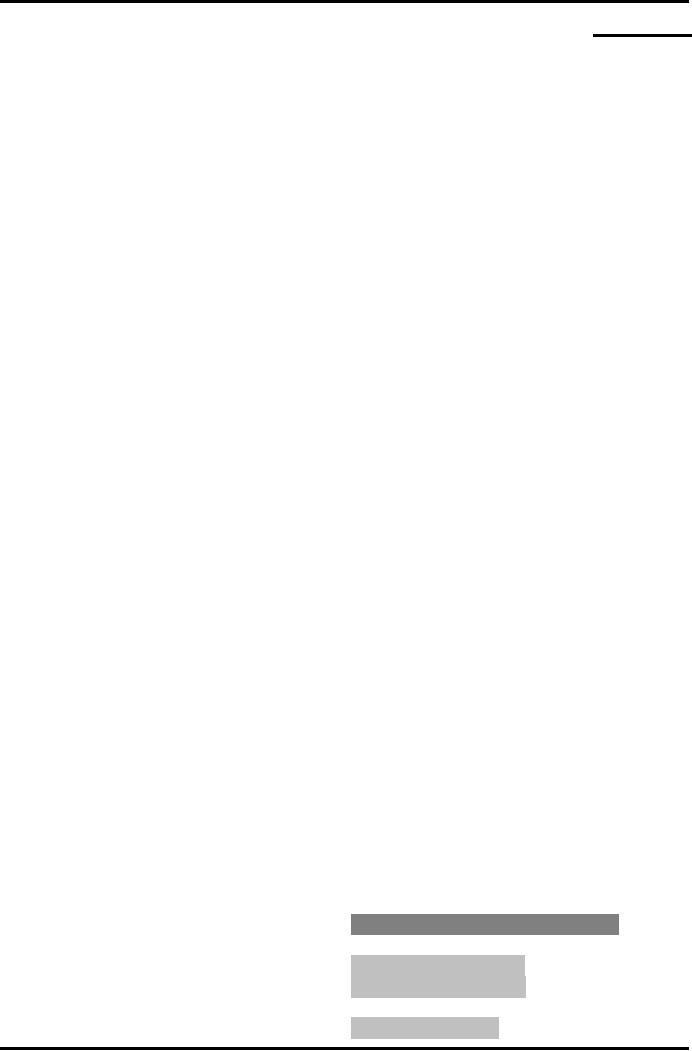
Advance
Financial Accounting
(FIN-611)
VU
LESSON
# 3
CONVERSION
OF SINGLE ENTRY IN DOUBLE
ENTRY ACCOUNTING
SYSTEM
1.
Accounting
for Medium scale business
entities
Businesses
grow by the time and so the
transactions also keep on becoming
complex. In this
situation
the system of knowing Net
profit through the Statement of
Profit or Loss does
not
suffice
the requirements of the management
nor the government agencies
put the level of
reliance on
such statement any
more.
Medium
scale business entities have
this much resources that
they can afford a semi
qualified
or a
reasonably good qualified accountant to
look after accounting issues
of the entity. But
such
accountants
are kept under the
supervision and guidance of the
accounting consultants who
are
qualified
accountant. These consultants provide
directions to the accountant to
maintain certain
books of
accounts and to extract summaries at
the end of the accounting
period. With the
help
of these
summaries the consultants
(qualified accountants) prepare
detailed Income
Statement
and Balance
Sheet for the medium
scale entity.
Such
Income Statement and Balance
Sheet is exactly the same
had there been a
systematic
double
entry accounting system
prevailing in practice.
1.1
Accounting
Records
Accountants
of these entities are
directed to maintain following
set of information,
which
although
does not constitute a
complete accounting system
but can work:
a)
Cash
Book
i. Cash
Account
ii.
Bank Account
b)
Debtors
(Accounts Receivables)
Ledger
c)
Creditors
(Accounts Payables) Ledger
d)
Statement of
Affairs (Opening)
e)
Year-end
adjustments
i. Closing
stock
ii.
Depreciation of fixed
assets
iii.
Provision for doubtful
debts
iv.
Accruals and prepayments
v. Disposal
of Assets
1.2
Preparation
of Financial Statements
Now
let's see how Income
Statement and Balance Sheet can be
prepared with the help of a
set
of
incomplete records. For this we will
analyze the contents of
Income Statement and
Balance
Sheet
item by item in the
following pages.
Name of
the Organization
Income
Statement
For
the year ended December 31
20x7
Source
of Information
Rs.
Sales
Cash
Sales
Cash
Book receipts side
Credit
Sales
Debtors
account Dr side
Cost of Goods
Sold
Opening
Stock
Statement of
Affairs
9
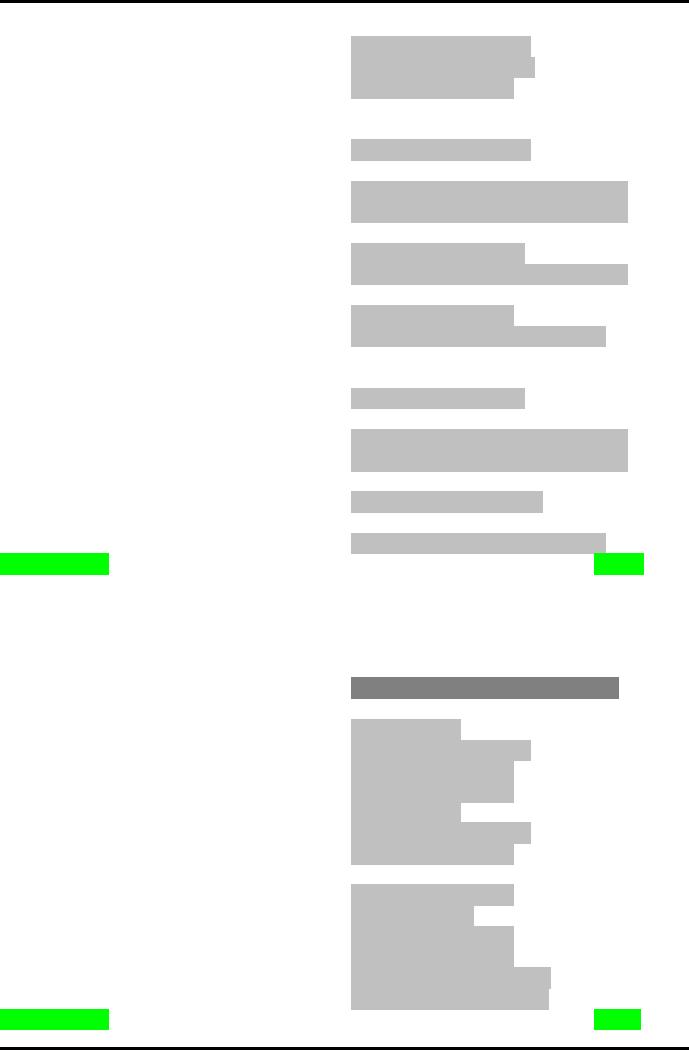
Advance
Financial Accounting
(FIN-611)
VU
Purchases
Cash
Purchases
Cash
Book payment side
Credit
Purchases
Creditors
account Cr side
Closing
Stock
Year-end
Adjustments
Gross
Profit
Operating
Expenses
Cash
based expenses
Cash
Book payment side
Adjusted
with:
Accrued
Expenses
S O
A-opening/Year-end Adjustments
Prepaid
Expenses
S O
A-opening/Year-end Adjustments
Expenses
against receivables
Bad
Debts/Discounts
Debtors
account Cr side
Provision
for doubtful debts
S O
A-opening/Year-end Adjustments
Expenses
against fixed assets
Depreciation
Year-end
Adjustments
Loss on
disposal
S O
A-opening/Cash Book receipts
Profit
from operations
Other
Income
Cash
based income
Cash
Book receipts side
Adjusted
with:
Accrued
incomes
S O
A-opening/Year-end Adjustments
Unearned
incomes
S O
A-opening/Year-end Adjustments
Incomes
against payables
Discounts
Creditors
accounts Dr side
Incomes
against fixed assets
Gain on
disposal
S O
A-opening/Cash Book receipts
Net
profit
Result
Name of
the Organization
Balance
Sheet
As on December 31
20x7
Source
of Information
Rs.
Assets
Fixed
Assets
S O
A-opening
Addition
Cash
Book payment side
Disposal
Year-end
Adjustments
Depreciation
Year-end
Adjustments
Investments
S O
A-opening
Addition
Cash
Book payment side
Disposal
Year-end
Adjustments
Current
Assets
Stocks
Year-end
Adjustments
Debtors
Debtors
Account
Prepaid
expenses
Year-end
Adjustments
Accrue
incomes
Year-end
Adjustments
Bank
Cash
Book (Bank Account)
Cash
Cash
Book (Cash Account)
Total
Result
10
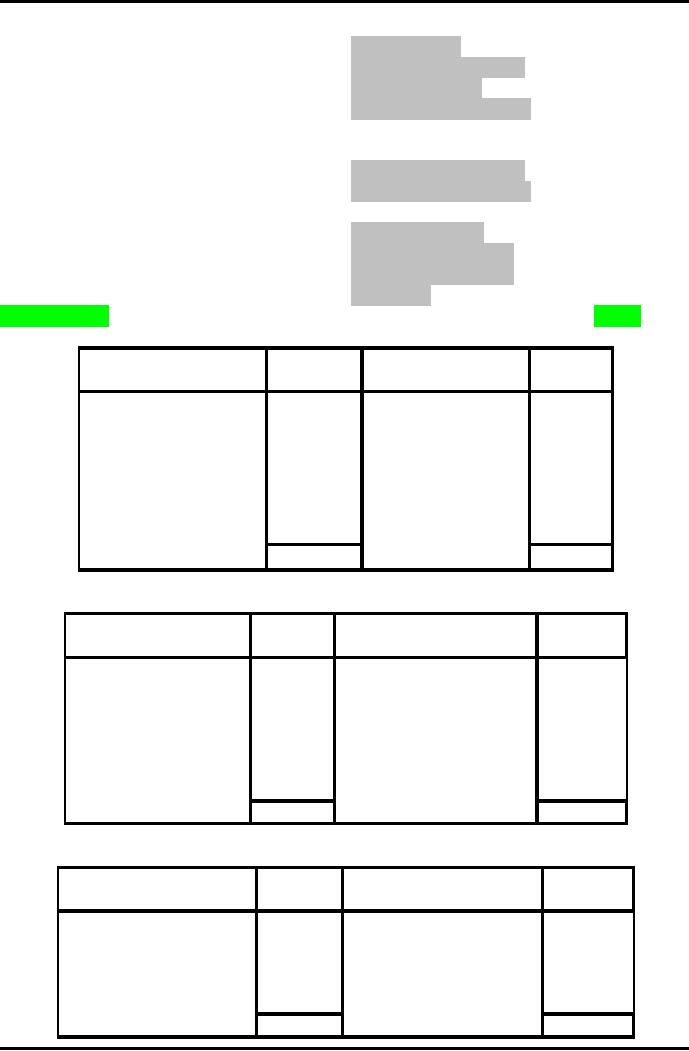
Advance
Financial Accounting
(FIN-611)
VU
Owner's
Equity
Opening
balance
S O
A-opening
Fresh
capital
Cash
Book receipts side
Net
profit
Income
Statement
Drawings
Cash
Book payment side
Liabilities
Loans
Further
loan taken
Cash
Book receipts side
Repayment of
loan
Cash
Book payment side
Current
liabilities
Creditors
Creditors
Account
Accrued
expenses
Year-end
Adjustments
Unearned
incomes
Year-end
Adjustments
Bank
overdraft
Cash
Book
Total
Result
Cash
Book
Payment
Amount
Receipts
Amount
Rs.
Rs.
Opening
balance
xxx
All payments
either
xxx
relating to
capital or
All
receipts
either
xxx
revenue
payments
relating
to capital or
xxx
revenue
receipts
Closing
balance
xxx
xxx
Debtors
Account
Decrease
in Debtors
Amount
Increase in
Debtors
Amount
Rs.
Rs.
Opening
balance
xxx
Cash
received from debtors
Xxx
Discount
allowed
xxx
Bad
debts
Credit
sales
xxx
xxx
Sales
return
xxx
Closing
balance
xxx
xxx
xxx
Creditors
Account
Decrease
in Creditors
Amount
Increase in
Creditors
Amount
Rs.
Rs.
Cash paid to
creditors
xxx
Opening
balance
xxx
Discount
received
xxx
Credit
purchase
xxx
Purchase
return
xxx
Closing
balance
xxx
xxx
xxx
11
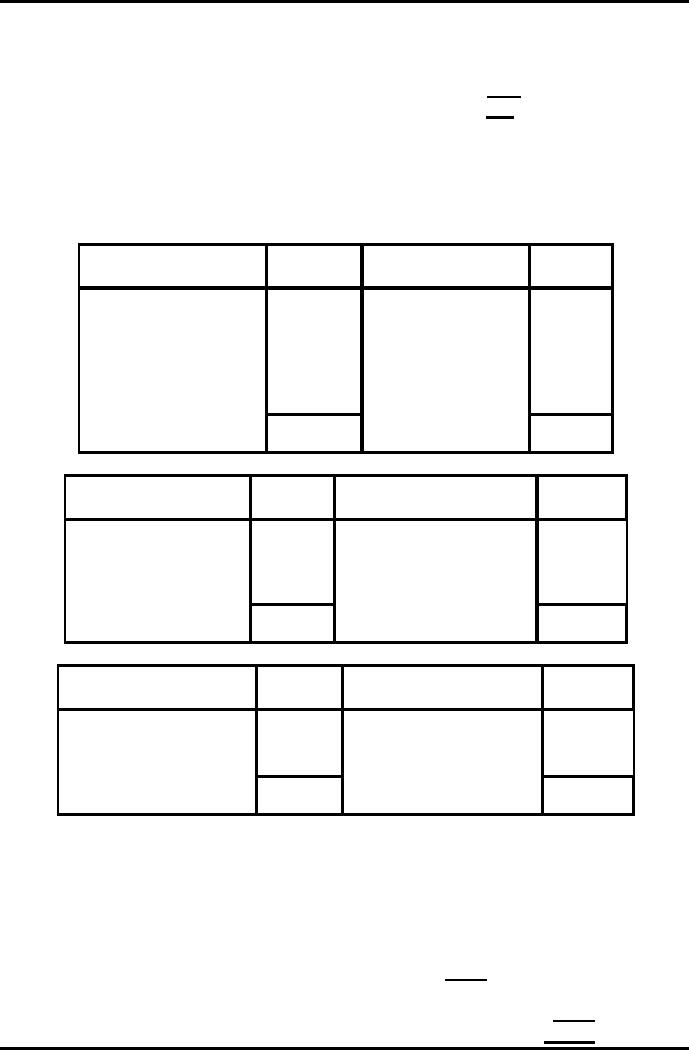
Advance
Financial Accounting
(FIN-611)
VU
Statement
of Affairs as on opening date
Opening
Assets
xxx
Opening
Liabilities
(xxx)
Owner's
Equity
xxx
Practice
Questions
Q.1
From
the following given
information you are required
to prepare Income Statement
and
Balance
Sheet for the year
2007.
Cash
Book
Receipts
Amount
Payment
Amount
Rs.
Rs.
Opening
balance b/f
1,500
Salaries and wages
2,000
Cash
sales
12,000 Rent
and rates
800
Received
from Debtors
25,000
Electricity bill
500
Loan
from brother
10,000
Drawings
15,000
Paid to
creditors
24,000
Closing
balance c/f
6,200
48,500
48,500
Debtors
Account
Amount
Amount
Rs.
Rs.
Opening
balance b/f
8,000
Cash
received
from
25,000
debtors
200
Credit
sales
22,000
Discount allowed
300
Bad
debts
4,500
30,000
Closing balance c/f
30,000
Creditors
Account
Amount
Amount
Rs.
Rs.
Cash paid to
creditors
24,000
Opening balance
5,500
Discount
received
400 Credit
purchase
25,000
Closing
balance c/f
6,100
30,500
30,500
Statement
of Affairs as on opening date
Rupees
Opening
Assets
Furniture
20,000
Stocks
6,000
Debtors
8,000
Cash
1,500
35,500
Opening
Liabilities
Creditors
5,500
Owner's
Equity
30,000
12
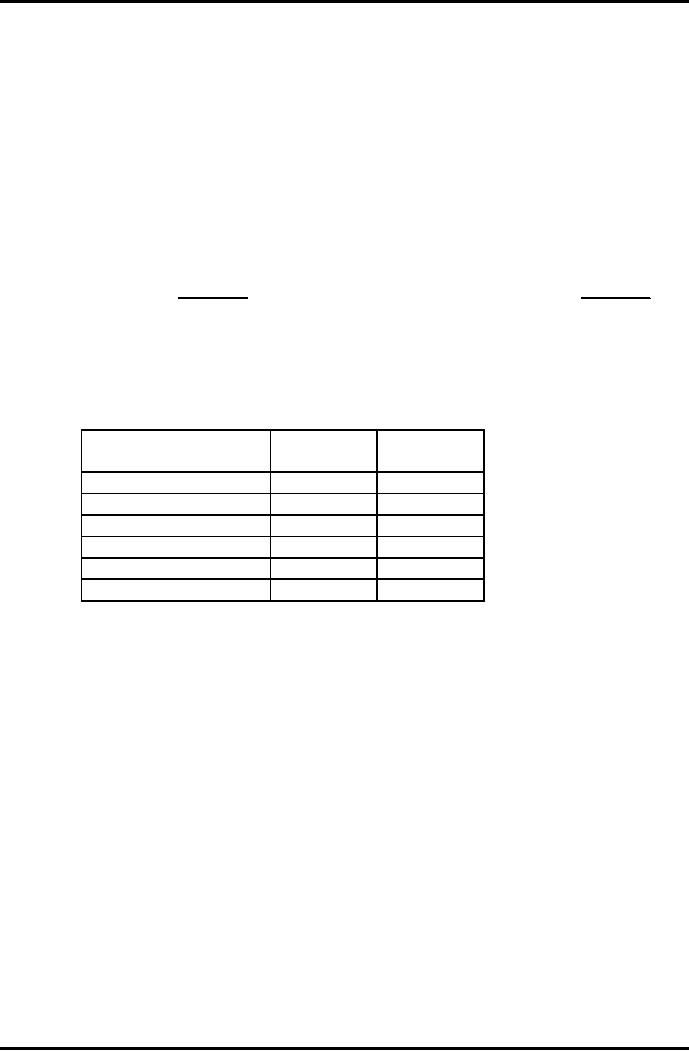
Advance
Financial Accounting
(FIN-611)
VU
Year
end adjustments
Closing
stock Rs. 3,200; rent
prepaid Rs. 200; salaries
owing Rs. 500; and furniture
is to be
depreciated @
10%.
Q.2
Following is
a summary of Kashif's bank
account for the ended 31
December 2007:
Rs.
Rs.
Balance
1.1 207
405
Payments to
creditors for goods
29,487
Receipts
from debtors
37,936
Rent
1,650
Balance
31.12.2007
602
Rates
890
Sundry
expenses
375
Drawings
6,541
38,943
38,943
All of the
business takings have been
paid into the bank with
the exception of Rs. 9,630.
Out of
this,
Kashif has paid wages of Rs.
5,472, drawings of Rs. 1,164
and purchase of goods Rs.
2,994.
The following additional
information is available:
31.12.2006
31.12.2007
Rs.
Rs.
Stock
13,682
15,144
Creditors
for goods
5,624
7,389
Debtors
for goods
9,031
8,624
Rates
prepaid
210
225
Rent
owing
150
-
Fixtures at
valuation
2,500
2,250
You are to
draw up profit and loss account
for the year ended 31
December 2007 and balance
sheet as on
that date. Show all of
your workings.
13
Table of Contents:
- ACCOUNTING FOR INCOMPLETE RECORDS
- PRACTICING ACCOUNTING FOR INCOMPLETE RECORDS
- CONVERSION OF SINGLE ENTRY IN DOUBLE ENTRY ACCOUNTING SYSTEM
- SINGLE ENTRY CALCULATION OF MISSING INFORMATION
- SINGLE ENTRY CALCULATION OF MARKUP AND MARGIN
- ACCOUNTING SYSTEM IN NON-PROFIT ORGANIZATIONS
- NON-PROFIT ORGANIZATIONS
- PREPARATION OF FINANCIAL STATEMENTS OF NON-PROFIT ORGANIZATIONS FROM INCOMPLETE RECORDS
- DEPARTMENTAL ACCOUNTS 1
- DEPARTMENTAL ACCOUNTS 2
- BRANCH ACCOUNTING SYSTEMS
- BRANCH ACCOUNTING
- BRANCH ACCOUNTING - STOCK AND DEBTOR SYSTEM
- STOCK AND DEBTORS SYSTEM
- INDEPENDENT BRANCH
- BRANCH ACCOUNTING 1
- BRANCH ACCOUNTING 2
- ESSENTIALS OF PARTNERSHIP
- Partnership Accounts Changes in partnership firm
- COMPANY ACCOUNTS 1
- COMPANY ACCOUNTS 2
- Problems Solving
- COMPANY ACCOUNTS
- RETURNS ON FINANCIAL SOURCES
- IASB’S FRAMEWORK
- ELEMENTS OF FINANCIAL STATEMENTS
- EVENTS AFTER THE BALANCE SHEET DATE
- PROVISIONS, CONTINGENT LIABILITIES AND CONTINGENT ASSETS
- ACCOUNTING POLICIES, CHANGES IN ACCOUNTING ESTIMATES AND ERRORS 1
- ACCOUNTING POLICIES, CHANGES IN ACCOUNTING ESTIMATES AND ERRORS 2
- BORROWING COST
- EXCESS OF THE CARRYING AMOUNT OF THE QUALIFYING ASSET OVER RECOVERABLE AMOUNT
- EARNINGS PER SHARE
- Earnings per Share
- DILUTED EARNINGS PER SHARE
- GROUP ACCOUNTS
- Pre-acquisition Reserves
- GROUP ACCOUNTS: Minority Interest
- GROUP ACCOUNTS: Inter Company Trading (P to S)
- GROUP ACCOUNTS: Fair Value Adjustments
- GROUP ACCOUNTS: Pre-acquistion Profits, Dividends
- GROUP ACCOUNTS: Profit & Loss
- GROUP ACCOUNTS: Minority Interest, Inter Co.
- GROUP ACCOUNTS: Inter Co. Trading (when there is unrealized profit)
- Comprehensive Workings in Group Accounts Consolidated Balance Sheet